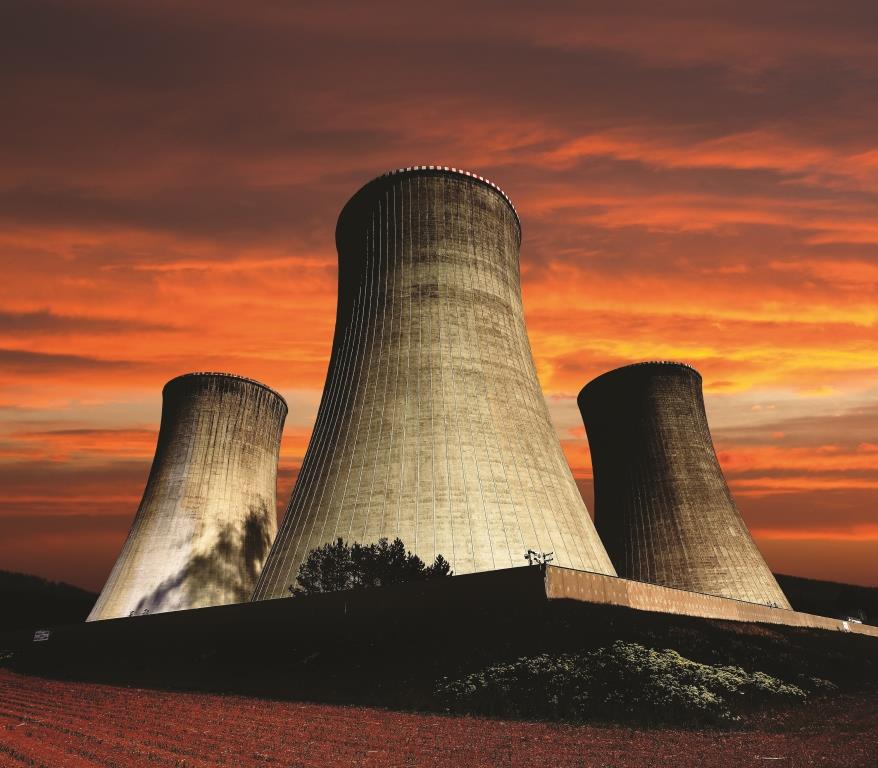Will the announced nuclear program energize South Africa’s manufacturing and construction?
My background is power engineering. Building power plants across Africa generates as many stories as they do megawatts. It is ironic that, in Africa’s most electrified economy, there are tales of powerless people and an economy running out of juice.
Eskom, South Africa’s national power generator, is cooking with gas (turbines) – at the cost of around $78 million a month – while grinding away at the late completion of the new 9,000MW Kusile and Medupi coal power plants. Medupi’s first 800MW unit is generating power and will be on commercial load in September, with up to 1,600MW coming onto the grid each year for the next five years.
Keep your gas cylinders full and your camping lights charged – there’s more to this story!
South Africa has a 40GW-headache to cure in the next 20 years. The first 10GW is merely to match current demand. Generation capacity is 40GW with only about 30GW available due to the UCLF (unplanned capacity loss factor) being high. The national demand is over 40GW as mines and smelters have shut down to help Eskom. Medupi and Kusile will merely tick this box.
Loading...
The second 10GW is needed to replace the old coal plants before 2025. They have been run hard well beyond their time. The third 10GW is needed to attract investment for growth and the fourth 10GW is for reserve capacity to allow for maintenance.
Coal may be easier and cheaper, but it’s dirty stuff and our economy has to be environmentally attractive to foreign investment. Few investors will stump up if it will worsen their carbon footprint.
So, 40GW in the next 20 years! Simply put, double Eskom. It has to be greener than ever before too – no dirty coal. That means nuclear topped up with clean coal IPPs. Wind and solar may be very sexy but they don’t deliver the big base load power that we need.
Like it or not, nuclear is the leading renewable energy source and South Africa is in play on the global nuclear stage to procure 9,600MW of nuclear power.
Contrary to the naysayers, nuclear energy’s lifetime cost is lower than most technologies, it’s expensive at the start, but cheaper to run.
South Africa’s nuclear regulatory body has defined that only the safest technology will meet the environmental and safety specifications for any new build program.
Russia, France and China are likely frontrunners, but who has the better and safest kit and who can offer a compelling financial deal? That’s where technology, money, politics and common sense meet in a witches brew.
The International Atomic Energy Authority (IAEA) Integrated Nuclear Infrastructure Review (INIR) sets the readiness criteria for building nuclear plants. A nuclear power plant is split into three main sections: The Nuclear Island, The Conventional Island (Turbine) and the Balance of Plant. South Africa is ready to manufacture and construct on the last two sections, which are similar to the local content of Medupi and Kusile, with some nuclear safety alignment.
The nuclear codes and quality standards take a quantum leap in the Nuclear Island and that is where the nuclear certified contractors like Group Five, Lesedi Nuclear Services and the South African Nuclear Energy Corporation (NECSA) are qualified. The country’s industry will have to partner with the successful vendors to hone those skills, train a workforce and learn from the build program in Europe, China and Russia.
There’s a buzz again. Nuclear vendors expected a request for proposals in August with a preferred Nuclear Vendor Country announced by March. Next year will see tendering for the local manufacturing and construction sector, with contracts signed in 2017 and construction starting in 2018.
The capital expenditure for 9,600MW will be approximately $40 to $50 billion, plus government costs and interest on capital. All this leads to trillions being spent over 15 years. That’s a big number that will reignite local industry and a knowledge economy after the last seven years of power cut misery.
Could we “boom” again?
Additional reporting from Des Muller, head of Group Five Nuclear Construction Services.
Loading...
